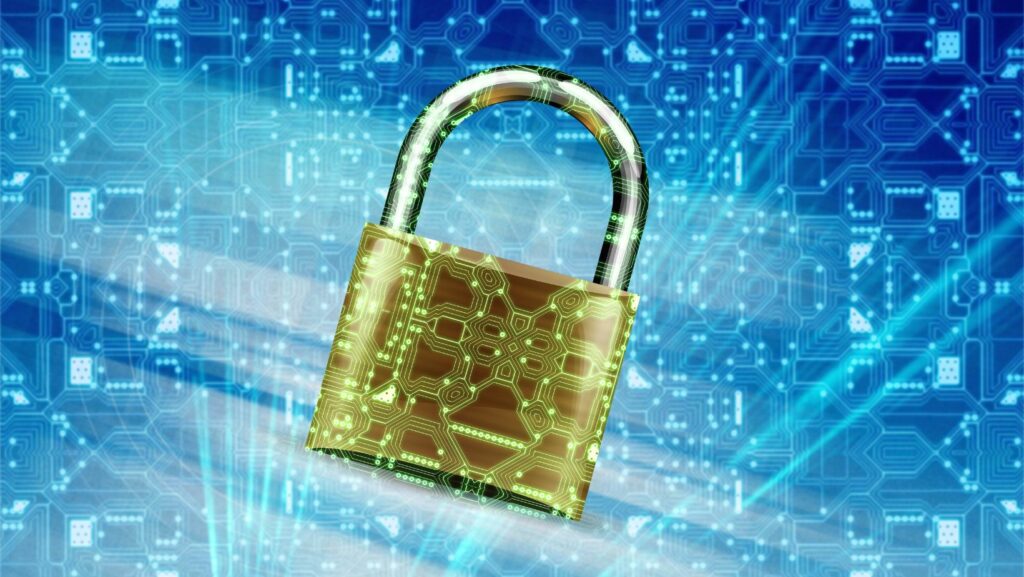Key Takeaways
- Importance of Data Privacy: Protecting sensitive information in public networks is essential for trust and integrity in the digital landscape.
- Key Security Components: Essential elements include encryption protocols, access controls, firewalls, and intrusion detection systems, all working together to safeguard data.
- Effective Encryption Techniques: Using strong encryption methods such as AES and RSA is crucial for securing data during transmission and storage.
- Multi-Factor Authentication (MFA): Implementing MFA significantly enhances security by requiring multiple verification factors for access, reducing unauthorized entry risks.
- Regular Security Audits: Conducting routine audits helps organizations identify vulnerabilities and adapt security measures to evolving threats, ensuring ongoing protection.
- Comprehensive Access Controls: Establishing clear access control policies ensures that only authorized users can access sensitive information, minimizing exposure to data breaches.
In today’s digital landscape, safeguarding sensitive information has never been more crucial. As businesses and individuals increasingly rely on public networks, the risk of data breaches looms large. A robust security component designed to protect data privacy within these networks is essential for maintaining trust and integrity.
This innovative technology not only encrypts data but also ensures it remains inaccessible to unauthorized users. By implementing such solutions, organizations can confidently navigate the complexities of public networks while keeping their valuable information secure. Understanding how these security components function empowers users to make informed decisions about their data protection strategies.
Security Component Which Equips Data and Keeps it Private within a Public Network
 Security components play a vital role in safeguarding data within public networks. These components include encryption protocols, access controls, firewalls, and intrusion detection systems.
Security components play a vital role in safeguarding data within public networks. These components include encryption protocols, access controls, firewalls, and intrusion detection systems.
- Encryption Protocols: Encryption transforms data into a coded format that only authorized users can access. Examples include AES (Advanced Encryption Standard) and RSA (Rivest-Shamir-Adleman) algorithms. These protocols protect sensitive information during transmission over public networks.
- Access Controls: Access controls limit who can view or edit data. Types of controls include role-based access control (RBAC) and mandatory access control (MAC). Implementing these controls ensures that only authorized personnel access sensitive data.
- Firewalls: Firewalls act as barriers between networks, monitoring incoming and outgoing traffic. They can be hardware or software-based. Properly configured firewalls block unauthorized access and safeguard data privacy.
- Intrusion Detection Systems: Intrusion detection systems (IDS) monitor network activities for suspicious behavior. They identify potential threats and alert administrators. Examples include network-based IDS and host-based IDS.
- Multi-Factor Authentication: Multi-factor authentication (MFA) adds an extra layer of security by requiring users to provide two or more verification factors to gain access. This can include something they know (password), something they have (smartphone), or something they are (fingerprint).
- Data Loss Prevention: Data loss prevention (DLP) technologies monitor data in use, in motion, and at rest. DLP solutions help prevent unauthorized data transfers and ensure compliance with regulations like GDPR.
Implementing these security components can significantly enhance data privacy and integrity within public networks. Organizations can adopt a layered security approach for comprehensive protection, mitigating risks associated with data breaches.
Importance of Data Privacy
 Data privacy serves as a critical component in protecting sensitive information across public networks. The integration of strong security measures not only safeguards data but also builds trust among users and organizations alike.
Data privacy serves as a critical component in protecting sensitive information across public networks. The integration of strong security measures not only safeguards data but also builds trust among users and organizations alike.
Public networks expose data to numerous threats, including unauthorized access, phishing attacks, and malware infiltration. Attackers often exploit vulnerabilities, targeting unencrypted information transmitted over these networks. Man-in-the-middle attacks allow cybercriminals to intercept communication. Additionally, unsecured devices can act as entry points for data breaches, putting sensitive information at risk. Organizations must recognize these threats and employ comprehensive security strategies to mitigate these dangers.
Benefits of Data Security
Implementing effective data security measures provides several benefits. Enhanced privacy protects sensitive information from unauthorized access, reducing the risk of data breaches. Encryption ensures that even if data is intercepted, it remains unreadable to unauthorized users. Access controls limit user permissions, minimizing potential exposure to sensitive information. Furthermore, strong data security fosters customer trust, allowing organizations to maintain a positive reputation in an increasingly digital marketplace. Regular audits and assessments also identify potential vulnerabilities, ensuring ongoing protection against evolving threats.
Key Features of Effective Security Components
Effective security components enhance data protection in public networks through various key features. These features ensure data remains encrypted and accessible only to authorized users, significantly improving privacy and reducing vulnerability to breaches.
Encryption Techniques
Encryption techniques play a crucial role in securing sensitive information. Methods such as Advanced Encryption Standard (AES) and RSA (Rivest-Shamir-Adleman) encrypt data, rendering it unreadable to unauthorized individuals.
- AES: AES utilizes symmetric key encryption, meaning the same key encrypts and decrypts data. It supports key sizes of 128, 192, and 256 bits, with 256-bit encryption offering the highest security level.
- RSA: RSA employs asymmetric key encryption, involving a pair of keys—a public key for encryption and a private key for decryption. This method facilitates secure data transmission and digital signatures.
Implementing strong encryption techniques can effectively protect data during storage and transmission across public networks.
Authentication Methods
Authentication methods confirm user identities before granting access to sensitive data. Common approaches include:
- Passwords: Passwords provide the first line of defense but require complexity to enhance security.
- Multi-Factor Authentication (MFA): MFA incorporates two or more verification methods, such as a password and a fingerprint. This boosts security by creating additional hurdles for unauthorized access.
- Biometric Authentication: Technologies such as fingerprint scanning and facial recognition offer secure, user-friendly methods of authentication that are difficult to replicate.
Using robust authentication methods ensures that only authorized personnel access sensitive information, reducing the chances of data breaches within public networks.
Implementing Security Components in Networks
Implementing robust security components is vital for protecting data within public networks. Understanding best practices and navigating common challenges ensures effective data protection.
Best Practices
- Utilizing Strong Encryption: Employ strong encryption methods like AES and RSA to secure sensitive data during transmission. Strong encryption protects against eavesdropping and unauthorized access.
- Adopting Multi-Factor Authentication (MFA): Implement MFA to add an extra layer of security. This process requires multiple forms of verification, enhancing user identity confirmation.
- Conducting Regular Security Audits: Perform routine audits to identify potential vulnerabilities. Regular assessments help organizations adapt to evolving threats and maintain compliance with security standards.
- Establishing Comprehensive Access Controls: Define access control policies to limit user permissions. Fine-tuning access ensures only authorized personnel can access sensitive data.
- Implementing Data Loss Prevention (DLP) Tools: Utilize DLP technologies to monitor and safeguard sensitive information. DLP tools help prevent accidental data exposure or unauthorized sharing.
- Evolving Threat Landscape: Organizations face constantly changing cyber threats, including sophisticated malware and phishing attacks. Staying informed about new threats requires ongoing training and vigilance.
- User Resistance to Security Protocols: Employees may resist stringent security measures, leading to non-compliance. Organizations must balance security needs with user experience to minimize disruptions.
- Integration of Security Components: Integrating multiple security technologies can create compatibility issues. Proper planning and troubleshooting are necessary for seamless integration.
- Resource Limitations: Limited budgets may restrict the adoption of advanced security tools. Organizations must prioritize investments in essential security components based on risk assessments.
- Maintaining Compliance: Adhering to various compliance regulations can be challenging. Organizations must stay updated on legal requirements to avoid penalties and ensure data protection.
Threats in Public Networks
Prioritizing data security in public networks is essential for organizations aiming to protect sensitive information. By leveraging advanced security components like encryption and multi-factor authentication, they can create a formidable defense against evolving threats. This proactive approach not only safeguards data but also fosters trust among users and clients.
Regular assessments and updates to security protocols ensure that organizations remain vigilant against potential vulnerabilities. As the digital landscape continues to change, adapting security measures will be crucial in maintaining data privacy and integrity. Embracing these strategies empowers organizations to navigate the complexities of public networks while keeping their data secure.

